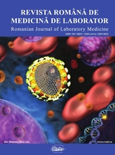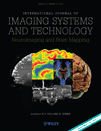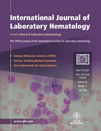
SLAS Technology
Scope & Guideline
Elevating Standards in Medical Technology and Computer Science
Introduction
Aims and Scopes
- Laboratory Automation and Robotics:
The journal emphasizes the integration of robotics and automation within laboratory settings to improve efficiency and reproducibility in experimental procedures. - Innovative Imaging Techniques:
There is a strong focus on developing and applying advanced imaging technologies for biomedical applications, including optical imaging and MRI, to aid in diagnostics and research. - Machine Learning and Data Analysis:
Machine learning applications are frequently explored, particularly in the context of predictive modeling and data-driven diagnostics, showcasing the journal's commitment to integrating computational techniques in life sciences. - Biotechnology and Bioengineering:
Research related to biotechnological advancements, including bioprinting, synthetic biology, and microfluidics, is a core area, reflecting the journal's commitment to innovative healthcare solutions. - Translational Science and Clinical Applications:
The journal also focuses on translating laboratory research into clinical applications, highlighting studies that bridge the gap between discovery and practical healthcare solutions.
Trending and Emerging
- Artificial Intelligence in Biomedical Applications:
The application of AI and machine learning techniques is rapidly increasing, with a focus on improving diagnostics, drug discovery, and personalized medicine. - Microfluidics and Lab-on-a-Chip Technologies:
There is a growing trend towards microfluidic systems and lab-on-a-chip technologies, which enable high-throughput screening and precise manipulation of biological samples. - Health Informatics and Data Integration:
Research focusing on health informatics, including the integration of big data and machine learning for health monitoring and predictive analytics, is gaining momentum. - Robotics in Healthcare and Laboratory Settings:
The use of robotics for enhancing laboratory automation and patient care, particularly in rehabilitation and surgical settings, is emerging as a significant research area. - 3D Bioprinting and Tissue Engineering:
Innovations in 3D bioprinting and tissue engineering are on the rise, reflecting a shift towards creating complex biological structures for research and therapeutic purposes.
Declining or Waning
- Traditional Laboratory Techniques:
There is a noticeable decline in publications centered around traditional laboratory methods, as the focus shifts toward automated and high-throughput approaches that enhance efficiency. - Basic Research without Automation:
Papers focusing solely on basic research without the integration of automation or technological enhancements are becoming less frequent, indicating a trend toward more applied, technology-driven studies. - Single-Agent Drug Studies:
Research centered on single-agent drug studies is waning, as the emphasis shifts towards combination therapies and personalized medicine approaches that leverage advanced technologies.
Similar Journals

CHEMOMETRICS AND INTELLIGENT LABORATORY SYSTEMS
Exploring the synergy of science and smart systems in laboratories.Chemometrics and Intelligent Laboratory Systems is a distinguished journal published by Elsevier, disseminating pivotal research and innovations at the intersection of analytical chemistry, computer science applications, and chemical engineering. With an impressive impact factor reflecting its scholarly influence, the journal aims to advance the development and implementation of chemometric methods, artificial intelligence, and intelligent systems in laboratory settings. Since its inception in 1986, the journal has consistently featured high-quality articles, currently positioned in the Q2 quartile across multiple relevant fields including Analytical Chemistry and Process Chemistry. Based in the Netherlands, the journal invites rigorous contributions that enhance the understanding and application of sophisticated data analysis techniques in scientific research. Although it currently does not offer open access options, the journal remains a vital resource for researchers and professionals dedicated to exploration and advancements in laboratory methodologies and analytical technologies.

CRITICAL REVIEWS IN CLINICAL LABORATORY SCIENCES
Unveiling the Future of Clinical BiochemistryCRITICAL REVIEWS IN CLINICAL LABORATORY SCIENCES, published by Taylor & Francis Ltd, stands as a premier journal in the field of clinical laboratory science, addressing pivotal advancements and challenges since its inception in 1970. With a commendable impact factor derived from its ranking in Q1 categories across multiple disciplines—including Biochemistry, Genetics and Molecular Biology, and Clinical Biochemistry—this journal is a critical resource for researchers, clinicians, and educators aiming to deepen their understanding and application of laboratory science. The journal's rigorous peer-review process ensures that only the highest quality research is published, providing a platform for profound discussions that influence laboratory practices globally. Although not an open-access journal, it offers various subscription options to facilitate access to its wealth of knowledge. Operating out of Abingdon, England, CRITICAL REVIEWS IN CLINICAL LABORATORY SCIENCES continues to shape the future of clinical biochemistry and laboratory research through its insightful articles, systematic reviews, and expert commentaries, making it an essential read for professionals eager to stay at the forefront of their field.

Pertanika Journal of Science and Technology
Transforming ideas into impactful discoveries.Pertanika Journal of Science and Technology, published by UNIV PUTRA MALAYSIA PRESS, stands as a significant platform in the fields of Agricultural and Biological Sciences, Chemical Engineering, Computer Science, and Environmental Science. With an ISSN of 0128-7680, this esteemed journal aims to foster high-quality research and knowledge sharing by presenting novel studies and advancements from 2010 onwards, with expectations of convergence until 2024. Recognized as a Q3 journal in multiple categories, including miscellaneous fields of the aforementioned domains, it offers a valuable resource for researchers, students, and industry professionals seeking to push the boundaries of science and technology. Though access options are currently limited, the journal's commitment to disseminating essential findings contributes to its credibility and relevance in the academic community, making it an essential read for those invested in cutting-edge scientific research and development. Based in Serdang, Selangor, Malaysia, the journal not only caters to a global audience but also emphasizes the significance of local research advancements in a broader context.

TEHNICKI GLASNIK-TECHNICAL JOURNAL
Advancing Innovation in Engineering and TechnologyTEHNICKI GLASNIK-TECHNICAL JOURNAL is a peer-reviewed, open-access journal published by UNIV NORTH in Croatia, dedicated to fostering knowledge and innovation in the fields of engineering, computer science applications, and information systems. With an ISSN of 1846-6168 and an E-ISSN of 1848-5588, this journal has been a vital resource for researchers since its transition to open access in 2009, ensuring that valuable insights are freely available to the global academic community. Notably, it has achieved a commendable presence in various Scopus categories, including ranking in the 34th percentile for general engineering and engaging with emerging trends in areas like computer graphics and management information systems. As of 2023, it holds quartile rankings ranging from Q3 in engineering to Q4 in several computer science categories, underlining its diverse scope and relevance. The journal aims to provide a platform for rigorous research, innovative methodologies, and practical applications, making it essential reading for academics, practitioners, and students interested in advancing their understanding and practice in technical disciplines.

Revista Romana de Medicina de Laborator
Exploring Breakthroughs in Biochemistry and BeyondRevista Romana de Medicina de Laborator is a prominent open-access journal published by SCIENDO, dedicated to the field of medical laboratory technology and biochemistry. Since its inception, this journal has been a vital platform for disseminating research findings and advancements in laboratory medicine. With an ISSN of 1841-6624 and E-ISSN 2284-5623, it has served the academic community since 2008 and has embraced an open-access model since 2013, ensuring that valuable research is accessible to all. While it features niche rankings in Scopus for areas such as Medical Laboratory Technology and Clinical Biochemistry, it consistently strives to engage researchers, professionals, and students. Its rich collection of articles highlights innovative techniques and methodologies, supporting the ongoing development of laboratory practices. Although its coverage in Scopus has been discontinued, the journal continues to publish high-quality studies that contribute significantly to the field, fostering knowledge exchange essential for advancing medical science.

INTERNATIONAL JOURNAL OF IMAGING SYSTEMS AND TECHNOLOGY
Innovating the Landscape of Imaging SystemsINTERNATIONAL JOURNAL OF IMAGING SYSTEMS AND TECHNOLOGY, published by Wiley, is a leading journal dedicated to advancing the field of imaging systems and technologies. With an ISSN of 0899-9457 and E-ISSN 1098-1098, this esteemed journal offers a platform for high-quality research spanning essential interdisciplinary areas, including Biomedical Engineering, Computer Science, and Health Informatics. Recognized for its impactful contributions, it holds a commendable position in the Q2 quartile across multiple categories as of 2023. The journal boasts an excellent Scopus ranking, with notable acknowledgments like rank #49 out of 333 in Radiology, Nuclear Medicine, and Imaging, showcasing its relevance and importance in the academic community. Publishes annually from 1989 to 2024, it aims to bridge gaps in knowledge and foster innovative developments through rigorous peer-reviewed articles. Though it operates under a traditional access model, the journal maintains an accessible repository of cutting-edge research, making it indispensable for researchers, professionals, and students alike seeking to stay at the forefront of imaging technology advancements.

Journal of Radiology Case Reports
Enhancing Diagnostic Accuracy with Real-World Case NarrativesThe Journal of Radiology Case Reports is a pioneering open-access journal dedicated to the publication of original case reports in the field of radiology, providing a crucial platform for the dissemination of valuable clinical insights and advancements in diagnostic imaging. Published by EDURAD since 2008, this journal aims to bridge the gap between clinical practice and ongoing research by showcasing unique cases that can enhance diagnostic accuracy and patient care. With an ISSN of 1943-0922, the journal is committed to excellence, evidenced by its current ranking in the Scopus database, where it stands at position #253 among 333 titles in the field, corresponding to a 24th percentile. The journal is indexed in notable databases and features an HIndex reflective of its ongoing contribution to medical literature. Researchers, professionals, and students can access insightful articles covering diverse case scenarios, thus enriching their knowledge of medical laboratory technology and enhancing their expertise in radiology, nuclear medicine, and imaging. The journal not only provides a wide reach through its open access model but also encourages collaborative research efforts, fostering the rapid circulation of case-based knowledge essential to the evolving landscape of radiological science.

International Journal of Laboratory Hematology
Connecting research and practice for the future of laboratory hematology.The International Journal of Laboratory Hematology, published by WILEY, serves as a vital resource in the field of hematology, delivering high-quality research findings and innovations within laboratory practices since its inception in 2007. This journal, accessible under Open Access options, showcases cutting-edge studies that span critical aspects of biochemistry and clinical laboratory methodologies. With a notable impact factor reflected in its Q2 and Q3 rankings across various categories—such as Biochemistry (medical) and Hematology—this journal stands out within the Scopus rankings, positioning itself within the 60th and 59th percentiles of its respective fields. Situated in the United Kingdom, the journal's objectives lie in disseminating pivotal research that enhances our understanding of hematological disorders and laboratory techniques, making it an essential tool for researchers, professionals, and students alike who are committed to advancing the science of laboratory hematology and its applications.

Cardiovascular Engineering and Technology
Innovating the Future of Cardiovascular HealthCardiovascular Engineering and Technology, published by SPRINGER, stands as a prominent journal in the fields of Biomedical Engineering and Cardiology. With an ISSN of 1869-408X, this journal bridges the gap between engineering innovation and cardiovascular health by exploring the latest advancements pertinent to cardiovascular technologies and therapies. The journal, currently in its converged years from 2010 to 2024, holds important positions in Quartile 3 of both Biomedical Engineering and Cardiology and Cardiovascular Medicine categories, highlighting its relevance and influence in these domains. Ranked in the 59th percentile for Cardiology and 42nd percentile for Biomedical Engineering, the journal is a valuable resource for researchers, professionals, and students keen on understanding the intersection of engineering solutions and cardiovascular medicine. Although the journal is not open access, it remains highly regarded for its rigorous peer-reviewed content that contributes to the advancement of technology in the cardiovascular field.

Computer Methods and Programs in Biomedicine
Advancing the Future of Biomedicine through Computational Innovation.Computer Methods and Programs in Biomedicine, published by ELSEVIER IRELAND LTD, is a leading journal at the intersection of computer science and biomedical research. With an impressive impact factor evidenced by its Q1 rankings in multiple categories—Computer Science Applications, Health Informatics, and Software—this journal ranks highly among peer publications, showcasing its significance in advancing interdisciplinary research. Covering a wide array of topics since its inception in 1985, it is particularly crucial for those invested in the innovation of computational methods applied to the biomedical field. The journal has established a strong reputation, with Scopus rankings placing it in the top percentiles across its relevant sectors, including the 14th position out of 138 in Health Informatics. Researchers, practitioners, and students looking to explore current trends, methodologies, and advancements in biomedical applications of computer science will find this journal an invaluable resource.